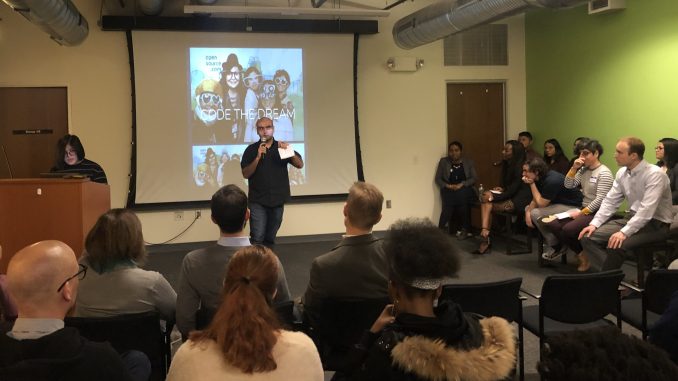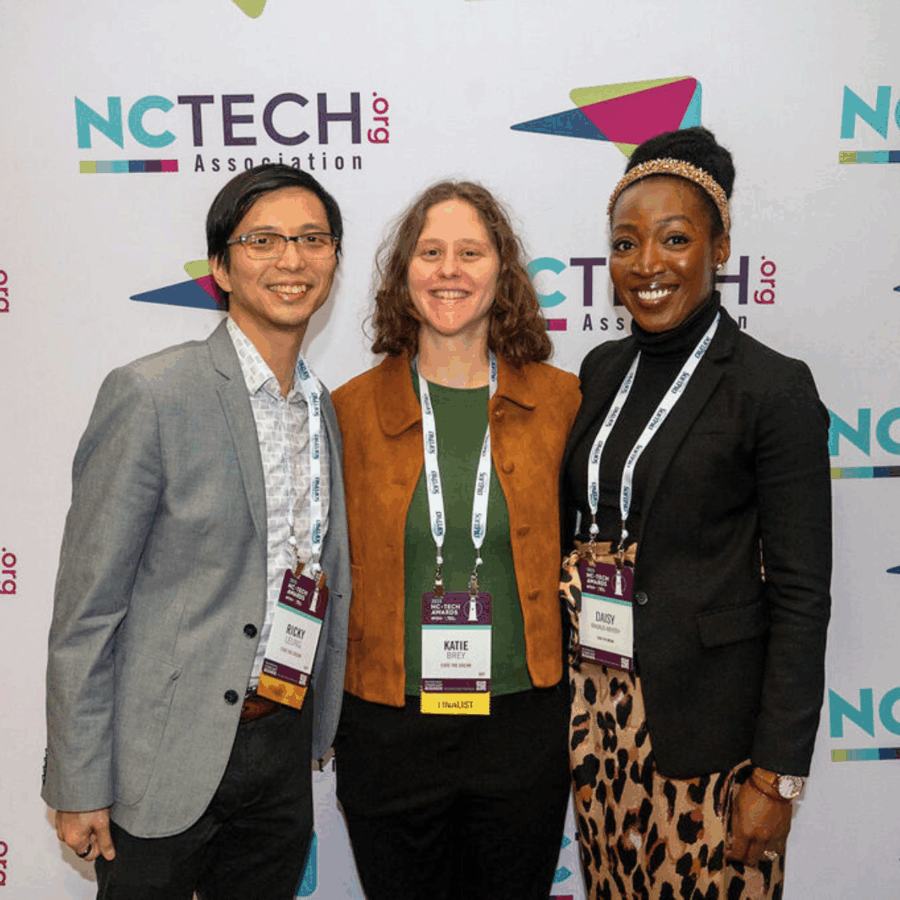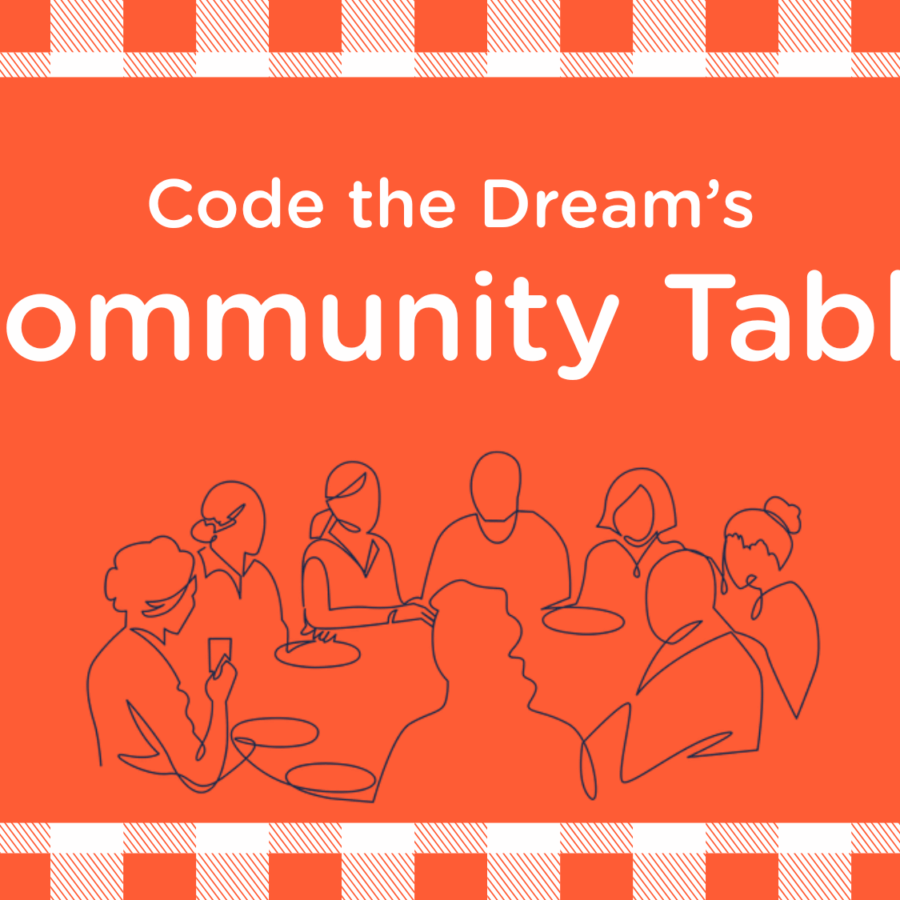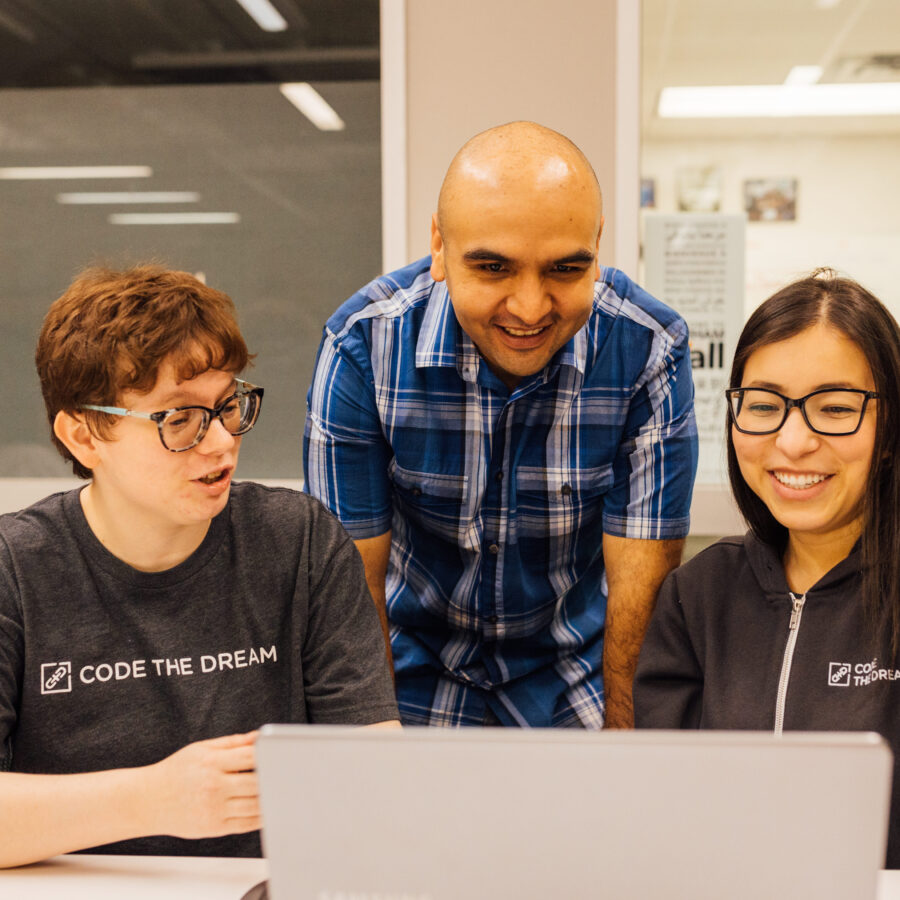by Marco Quiroz-Gutierrez | Originally published March 5, 2019 in GrepBeat

Sitting in a classroom in the basement of American Underground’s American Tobacco campus, eight of Code the Dream’s young programmers waited to present their apps to an eager audience last Friday.
But, something made this event different from most tech demos. In fact, something was different about the programmers themselves.
In an industry where 7 percent of employees are black, 8 percent of employees are Hispanic or Latino and only 36 percent of employees are women, most of these programmers were people of color, and a majority were women of color.
Friday’s demo was partly aimed at telling people about the civically oriented apps the Durham-based program’s students created, but also to spread the word about its free programming instruction program that has landed its primarily low-income and immigrant students jobs at companies like IBM, AT&T and a variety of local startups.
Standing in front of the crowd at the pitch event, Executive Director Dan Rearick explained Code the Dream’s mission.
“We envision a world in which everyone does have the opportunity to have those amazing jobs to build that life for themselves,” said Rearick, one of Code The Dream’s Co-Founders. “But, also to do it in a way where they’re actually gaining the experience making apps that make the world a little bit better place.”
During its six-month series of courses, students work during evenings and weekends to learn programming languages and frameworks such as Ruby on Rails and both full-stack and front-end JavaScript.
Although it started solely as free programming lessons in 2014, in the past two years, Code the Dream has expanded to include Code the Dream Labs, where students who have graduated from the training program build their portfolio by creating apps that help the community—while getting paid.
One of these apps is a ride-share program for homeless shelters that improves the coordination between volunteers with cars and recently homeless people who need a ride to job interviews, doctor’s appointments or important errands.
Code the Dream intern Laura Duran, who helped present the ride-share app at the demo day, said Code the Dream is changing the lives of its interns and students.
“I really love to work with people who know your name and appreciate your work,” she said. “I don’t want to be just another number, and I love how Code the Dream really gives back to its community. Since growing up I was always raised to give back, so I’m just carrying on what I’ve learned.”
Making Tech Careers Accessible
For Code the Dream Co-Founder and Lead Instructor, Ramiro Rodriguez—who is an immigrant and computer programmer himself—seeing students like he once was becoming confident in their coding abilities is what drives him.
“I discovered that a lot of people are really intimidated with a lot of terminology that is used in computer science,” said Rodriguez, “or they just don’t see themselves as being the person that can think like that or do that kind of work. For me it’s very rewarding to eventually see people changing their minds and thinking they are capable of programming—that they are capable of thinking in those ways and succeeding.”
As the technology industry grows and more and more low-skill jobs are eliminated in the U.S., Rearick said he wants to see immigrants, refugees and people of color benefitting from tech and not being left on the sidelines.
“If you’re a tech lover and you believe that technology does have all this potential to solve the world’s problems,” said Rearick, “then to think that we can get the best outcomes by having only half of the society involved in it is like fighting with one hand tied behind your back.”





